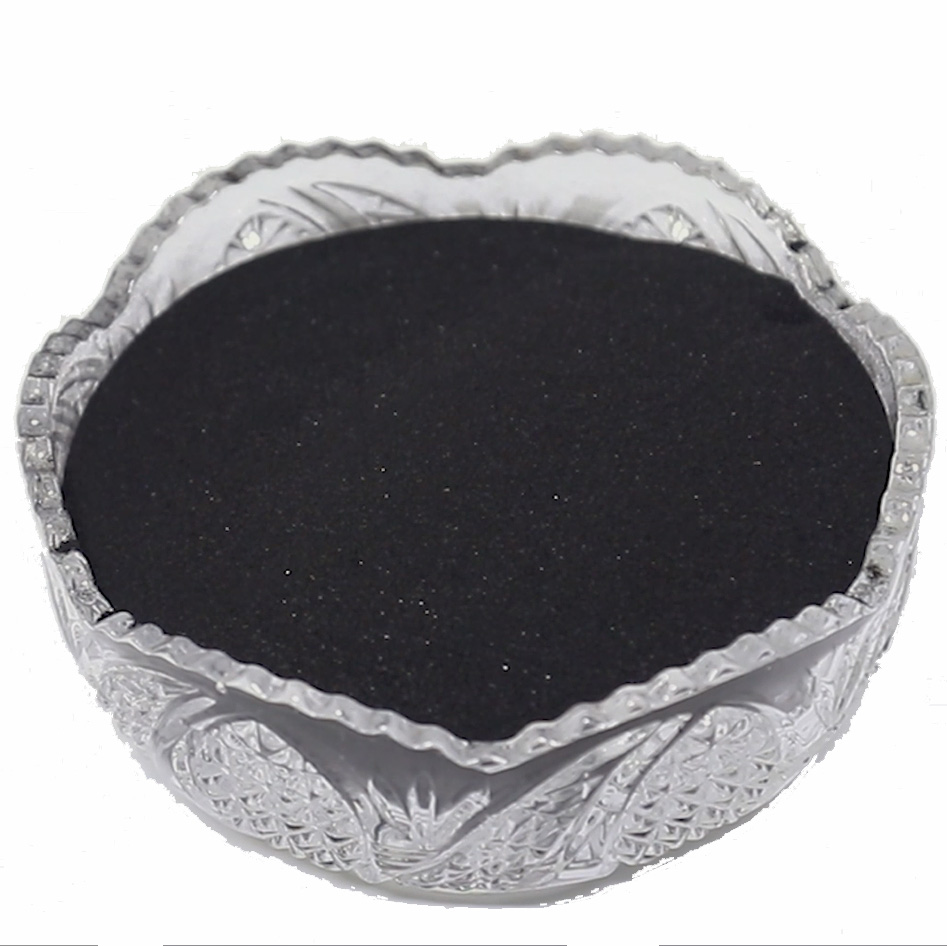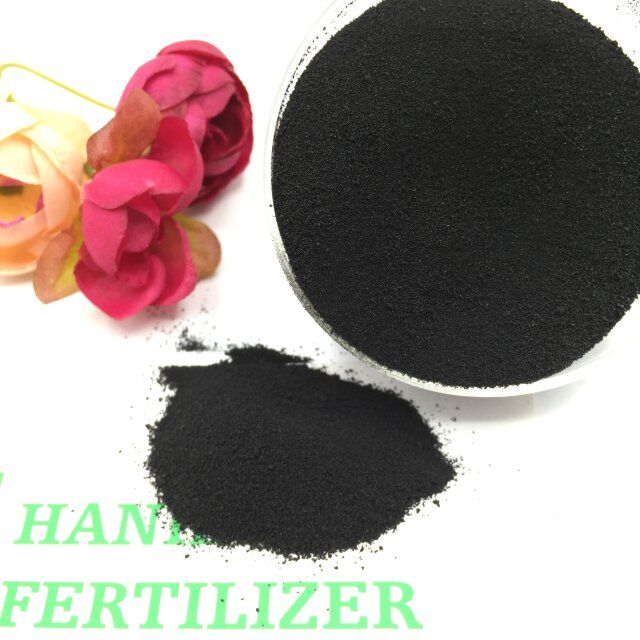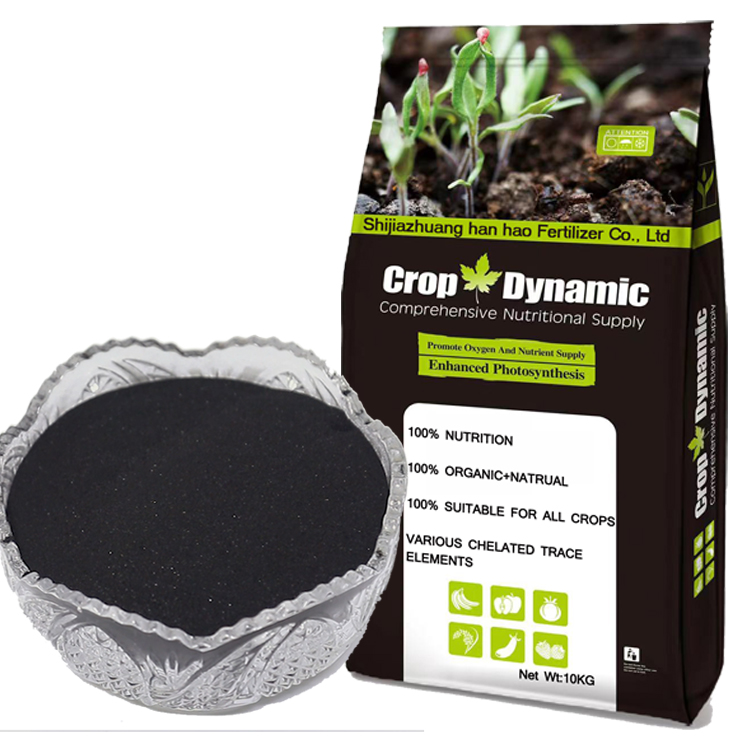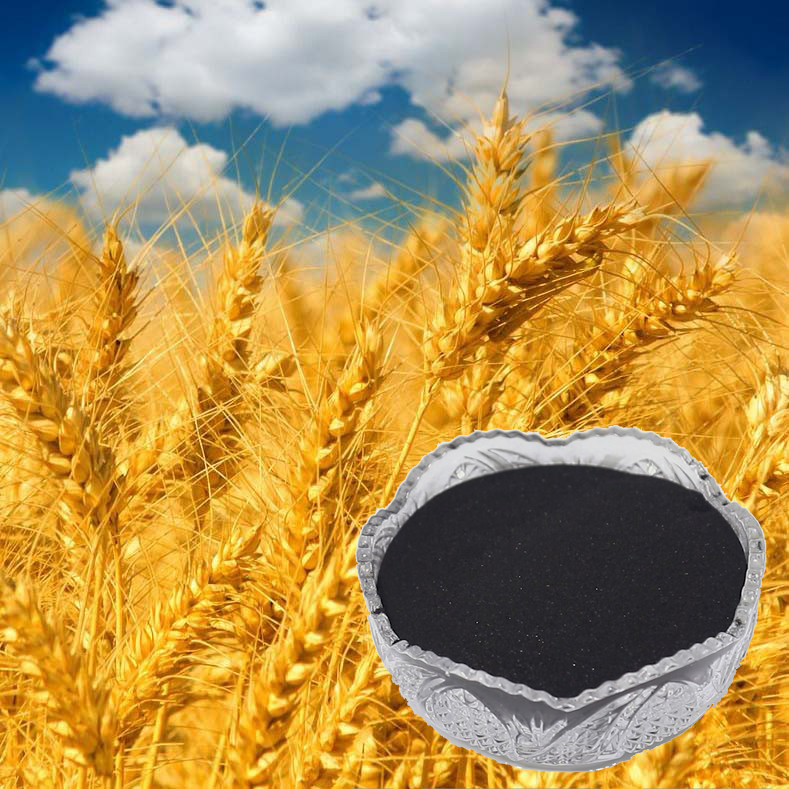
Aug . 23, 2025 01:00 Back to list
Organic Amino Acid Fertilizer for Plants | Boost Growth & Yield
The Strategic Role of Amino Acid Fertilizers in Modern Agriculture and Horticulture
In the rapidly evolving landscape of agricultural technology, the demand for sustainable, high-efficiency inputs is escalating. Among these, amino acid fertilizer has emerged as a cornerstone solution, offering unparalleled benefits for soil health and crop productivity. These advanced biostimulants are revolutionizing how nutrients are delivered and utilized by plants, addressing the limitations of conventional synthetic fertilizers.
Industry trends indicate a significant shift towards bio-organic solutions, driven by environmental concerns, regulatory pressures, and a growing consumer preference for sustainably produced food. The market for products like amino acid fertilizer is projected for robust growth, reflecting its critical role in enhancing plant resilience, nutrient uptake efficiency, and overall yield quality. This growth is further propelled by the increasing adoption of precision agriculture and integrated nutrient management strategies, where every input is optimized for maximum return on investment and minimal environmental footprint.
As agricultural enterprises strive for enhanced sustainability and operational efficiency, the selection of the best organic acid fertilizer becomes paramount. Solutions incorporating amino acids, often paired with humic substances, provide a holistic approach to plant nutrition and soil conditioning. These synergistic formulations contribute to a thriving rhizosphere, improving microbial activity and making nutrients more bioavailable, which is crucial for modern intensive farming systems.

Visual representation of advanced agricultural nutrient solutions.
Technical Specifications and Compositional Efficacy
The efficacy of amino acid fertilizer stems from its complex biochemical composition. Amino acids are the fundamental building blocks of proteins, essential for all cellular functions in plants. When applied externally, they act as biostimulants, chelating agents, and direct nutrient sources, facilitating a multitude of physiological processes.
Our flagship Humic Acid Raw Material Powder, available at https://www.hhfertilizer.com/humic-acid-raw-material-powder.html, often forms a synergistic base for advanced fertilizer formulations. Humic acids, including humic acid potassium humate, enhance nutrient availability, improve soil structure, and increase cation exchange capacity (CEC), creating an optimal environment for amino acid absorption and activity. Combined with essential NPK elements, these create a potent humic acid npk fertilizer that maximizes nutrient use efficiency.
Specific amino acids like Glycine, Proline, Glutamic Acid, and Arginine play distinct roles. Glycine, for example, is a precursor for chlorophyll synthesis, while Proline aids in osmotic regulation and stress tolerance. The chelation capacity of amino acids allows them to bind with micronutrients (e.g., Fe, Zn, Mn, Cu), forming soluble complexes that are readily absorbed by plants, even in challenging soil conditions. This superior bioavailability minimizes nutrient lockout and wastage, a common problem with conventional fertilizers.
Typical Product Specifications: Humic Acid Raw Material Powder
Understanding these specifications is crucial for formulators and agricultural professionals to ensure the development of effective, high-performance fertilizers. The consistent quality of npk fertilizer raw materials, including those rich in humic and amino acids, directly impacts the final product's efficacy and shelf life.
Manufacturing Process Flow of Amino Acid Fertilizer
The production of high-quality amino acid fertilizer involves a sophisticated multi-stage process designed to preserve the biological activity and purity of the active compounds. This detailed process ensures a product that meets stringent agricultural demands and international quality standards.
Key Stages in Manufacturing:
- Raw Material Sourcing and Pre-treatment: High-grade organic materials, such as plant-based proteins (e.g., soybean meal, corn gluten meal) or animal by-products (e.g., feather meal, fish meal), are carefully selected. For humic acid components, natural leonardite or lignite is sourced. These npk fertilizer raw materials undergo initial cleaning and grinding to achieve a uniform particle size, optimizing subsequent processing.
-
Hydrolysis or Fermentation:
- Enzymatic Hydrolysis: This preferred method uses specific enzymes (proteases) under controlled temperature and pH conditions to break down proteins into free amino acids and short-chain peptides. This gentle process preserves the biological activity of the amino acids and minimizes the formation of undesirable by-products.
- Microbial Fermentation: Certain microorganisms are utilized to synthesize amino acids from simpler carbon and nitrogen sources. This biotechnological approach offers a sustainable route, often yielding specific L-amino acid configurations.
- Chemical Hydrolysis: Acid or alkaline hydrolysis can be used, but requires careful control to avoid amino acid degradation and racemization. It is less common for premium products due to potential quality impacts.
- Purification and Concentration: The hydrolyzed or fermented broth undergoes several purification steps, including filtration, centrifugation, and membrane separation, to remove insoluble residues, salts, and other impurities. The purified liquid is then concentrated through evaporation or reverse osmosis to increase the amino acid content.
- Formulation and Blending: The concentrated amino acid solution is carefully blended with other active ingredients, such as humic acids, fulvic acids, potassium humate, and micronutrients, to create a balanced humic acid npk fertilizer. Specific formulations might include additional NPK elements or biostimulants based on target application and desired plant response. Precision mixing ensures homogeneity.
- Drying and Granulation (if applicable): For powdered or granular products, the concentrated solution is dried using spray drying or fluid bed drying techniques, converting it into a fine, soluble powder. Granulation may follow for specific applications, enhancing handling and controlled release properties. The resulting black powder fertilizer (when humic acid-rich) or fine white/yellow powder ensures ease of application.
- Quality Control and Packaging: Throughout the entire process, rigorous quality control checks are performed at each stage. This includes analysis for amino acid profile, total nitrogen content, heavy metal contamination, pH, moisture content, and solubility. Products are tested against internal specifications and international standards such as ISO 9001:2015. Finished products are then packaged in moisture-proof, UV-resistant bags or container111s, ready for distribution.
This meticulous process ensures that our amino acid fertilizer products not only meet but often exceed industry benchmarks for purity, efficacy, and environmental safety. The robust quality assurance framework, adhering to international standards like ISO, guarantees a consistent service life and optimal performance across various target industries, primarily agriculture and horticulture. By focusing on energy-efficient hydrolysis methods and minimizing waste, our manufacturing process also embodies sustainable practices.

Raw materials being processed for fertilizer production.
Technical Advantages of Amino Acid Fertilizers
The deployment of amino acid fertilizer offers a compelling suite of technical advantages over traditional nutrient sources, leading to significant improvements in plant health, yield, and overall agricultural sustainability.
- Enhanced Nutrient Uptake and Efficiency: Amino acids, particularly L-amino acids, act as natural chelating agents. They bind with essential macro and micronutrients (e.g., Fe, Zn, Mn, Cu, Ca), forming stable complexes that are more readily absorbed by plant roots and foliage. This chelation effect significantly increases nutrient bioavailability, minimizing lockout in the soil and reducing the required dosage of mineral fertilizers.
- Stress Tolerance and Recovery: Plants under abiotic stress (drought, salinity, extreme temperatures, heavy metal toxicity) synthesize amino acids like Proline and Glycine Betaine to cope. Supplying these exogenously via organic l amino acid fertilizer for plants helps plants conserve energy, accelerate recovery, and maintain metabolic function under adverse conditions, leading to more resilient crops.
- Improved Soil Health and Microbial Activity: The organic carbon and nitrogen provided by amino acids serve as a vital food source for beneficial soil microorganisms. This stimulates microbial growth and diversity, enhancing nutrient cycling, improving soil structure (aggregation), and increasing the overall biological fertility of the soil. This synergy is particularly potent when combined with black powder fertilizer (humic acid-rich products).
- Biostimulant Properties and Hormone Precursors: Many amino acids are precursors to phytohormones and growth regulators. For instance, Tryptophan is a precursor to Auxin, promoting root development. Methionine is involved in Ethylene and Polyamine synthesis, influencing flowering and fruit ripening. These intrinsic biostimulant effects lead to better vegetative growth, improved flowering, and enhanced fruit set.
- Reduced Environmental Impact: By optimizing nutrient use efficiency, amino acid fertilizer reduces the leaching of nitrates and phosphates into water systems and minimizes gaseous emissions. This contributes to a smaller carbon footprint and aligns with sustainable agricultural practices, offering a more eco-friendly alternative to purely synthetic inputs.
- Enhanced Crop Quality and Yield: The cumulative effect of improved nutrient uptake, stress resilience, and biostimulation translates directly into higher yields and superior crop quality. This includes increased Brix levels in fruits, better shelf life, improved protein content in grains, and enhanced color and flavor profiles, leading to greater market value.
These technical benefits underscore why amino acid fertilizer is becoming indispensable for modern farming operations seeking to maximize productivity while minimizing environmental impact. Our commitment to supplying high-purity npk fertilizer raw materials ensures these advantages are fully realized in the field.
Application Scenarios and Target Industries
The versatility of amino acid fertilizer allows for its effective deployment across a diverse range of agricultural and horticultural applications. Its tailored benefits make it a preferred choice for various cultivation systems and crop types.
- Broadacre Crops: For staple crops like corn, wheat, rice, and soybeans, amino acid applications improve nutrient assimilation, enhance root architecture, and mitigate environmental stresses, leading to significant yield increases. Foliar applications are particularly effective during critical growth stages.
- Horticulture and Specialty Crops: In fruits, vegetables, and ornamental plants, amino acid fertilizer improves flowering, fruit setting, fruit size, color, and sugar content (Brix). It aids in recovery from transplant shock and supports vigorous growth in high-value crops where quality is paramount.
- Nurseries and Greenhouses: Providing young plants with a balanced amino acid profile ensures robust early development, stronger root systems, and better establishment post-transplant. It also helps manage nutrient deficiencies in soilless culture systems.
- Turf Management and Landscaping: For golf courses, sports fields, and public green spaces, amino acids contribute to denser, healthier turf, improved stress recovery from foot traffic or disease, and vibrant color. Combined with humic acid npk fertilizer, it enhances soil structure and water retention.
- Organic Farming and Sustainable Agriculture: As a natural, biodegradable input, amino acid fertilizers are perfectly aligned with organic farming principles. They are key components in integrated nutrient management systems aimed at reducing reliance on synthetic chemicals and improving overall farm ecosystem health. Our organic l amino acid fertilizer for plants ensures compliance with stringent organic standards.
- Seed Treatment: Applied as a seed coating or during germination, amino acids can boost early seedling vigor, root development, and nutrient uptake, providing a strong start for the crop cycle.
These varied applications underscore the adaptability and indispensable nature of amino acid fertilizer in achieving specific agricultural objectives, from maximizing yield in field crops to enhancing the aesthetic appeal of ornamentals. Its role in sustainable agriculture ensures long-term soil productivity and environmental stewardship.

Precision application of liquid fertilizer in modern agriculture.
Vendor Comparison and Customized Solutions
Selecting the right supplier for amino acid fertilizer is a critical decision that impacts product quality, supply chain reliability, and ultimately, agricultural output. Key factors for B2B decision-makers and engineers include raw material purity, manufacturing expertise, certification, and the capability for customized solutions.
Vendor Comparison: Key Differentiators
The Importance of Customized Solutions
Every agricultural operation is unique, with distinct soil compositions, climate conditions, crop varieties, and desired outcomes. Generic fertilizer solutions, while broadly effective, often fail to address specific challenges or optimize for peak performance. This is where customized humic acid npk fertilizer formulations, enriched with tailored amino acid profiles, become invaluable.
Customization involves an in-depth analysis of soil tests, leaf tissue analysis, and crop growth patterns to formulate an amino acid fertilizer with the precise ratios of essential amino acids, humic substances, and NPK nutrients. This bespoke approach ensures:
- Maximized nutrient efficiency, reducing waste and input costs.
- Targeted stress mitigation for specific environmental challenges.
- Optimized crop growth stages (e.g., vegetative growth, flowering, fruiting).
- Compliance with specific organic or sustainable farming certifications.
As a leading supplier, we pride ourselves on our technical expertise and capacity to develop highly specific formulations, including humic acid potassium humate combinations, ensuring our partners receive the most effective solutions for their unique agricultural needs.
Application Case Studies: Realizing the Benefits of Amino Acid Fertilizer
The practical impact of amino acid fertilizer is best illustrated through real-world application scenarios, demonstrating tangible improvements in yield, crop quality, and economic returns. These case studies underscore the reliability and effectiveness of our advanced biostimulant solutions.
Case Study 1: Enhanced Maize Yield in Drought-Stressed Regions
Client Profile: Large-scale maize farm in a semi-arid region of the Midwestern United States, historically prone to mid-season drought stress affecting grain fill.
Challenge: Consistent yield reduction (15-20%) due to water deficit during critical tasseling and silking stages, leading to significant economic losses.
Solution: Implementation of a foliar application program using our specialized organic l amino acid fertilizer for plants, enriched with proline and glycine, applied at two key stages: V6 (six-leaf stage) and VT (tasseling stage). This was integrated with their standard humic acid npk fertilizer base application.
Results: Across three consecutive growing seasons, fields treated with the amino acid supplement showed an average yield increase of 18.5% compared to control fields. Kernel weight improved by 12%, and plant resilience to short-term drought events was visibly enhanced, with reduced leaf rolling and delayed senescence. This translated into an additional $150 per acre in net revenue.
Case Study 2: Improved Fruit Quality and Shelf Life in Table Grapes
Client Profile: Premium table grape vineyard in California, focusing on export-grade fruit with stringent quality requirements for sweetness, firmness, and appearance.
Challenge: Inconsistent fruit sugar levels (Brix), occasional berry softening, and susceptibility to post-harvest decay, impacting marketability and export potential.
Solution: A targeted fertigation program utilizing our custom-blended amino acid fertilizer, featuring high concentrations of glutamic acid and aspartic acid, applied weekly during fruit development and ripening stages. This complemented their existing nutrient management program which included humic acid potassium humate for soil conditioning.
Results: The treated grapevines exhibited a 1.5-point increase in average Brix levels, resulting in sweeter, more desirable fruit. Berry firmness improved by 20%, significantly reducing bruising during handling and transportation. Post-harvest shelf life extended by an average of 5 days, a critical factor for export. The enhanced quality allowed for access to higher-tier markets, boosting profitability by 25%.
Case Study 3: Optimized Nutrient Uptake in Greenhouse Tomatoes
Client Profile: Large commercial greenhouse operation growing hydroponic tomatoes in the Netherlands, seeking to optimize nutrient use efficiency and reduce synthetic fertilizer consumption.
Challenge: Maintaining optimal nutrient balance in soilless culture, occasional micronutrient deficiencies, and a desire to reduce environmental impact by lowering chemical fertilizer inputs without sacrificing yield.
Solution: Integration of a specialized amino acid fertilizer, formulated for hydroponics with chelated micronutrients, into their nutrient solution at a reduced overall NPK rate. This was carefully monitored via sap analysis and yield data. The product acted as an enhancer for the base npk fertilizer raw formulation.
Results: The greenhouse achieved a 15% reduction in overall synthetic NPK fertilizer consumption while maintaining comparable yield volumes and improving fruit size uniformity. Leaf tissue analysis confirmed superior micronutrient uptake, eliminating previous deficiency symptoms. The operational cost savings from reduced fertilizer usage, coupled with improved plant vitality, led to a 10% increase in net profit margins.

Healthy, vibrant crops benefiting from advanced nutrient programs.
Trustworthiness: FAQ, Lead Time, Warranty, and Support
Building long-term partnerships in the B2B sector relies on transparency, reliability, and robust support systems. We are committed to providing comprehensive information and services that instill confidence in our products, particularly our high-performance amino acid fertilizer solutions.
Frequently Asked Questions (FAQ)
Q: What is the primary source of the amino acids in your fertilizer products?
A: Our amino acids are primarily derived from high-grade plant-based proteins, processed via enzymatic hydrolysis to ensure a rich profile of L-amino acids, which are biologically active and readily assimilated by plants.
Q: Are your products suitable for organic farming?
A: Yes, many of our organic l amino acid fertilizer for plants formulations are certified for organic use by recognized international bodies such as OMRI. Please consult specific product datasheets or contact our sales team for detailed certification information.
Q: Can your humic acid npk fertilizer products be blended with other crop protection chemicals?
A: Our products are generally compatible with most common crop protection agents. However, we always recommend conducting a small-scale compatibility test (jar test) before widespread application, especially when mixing with unfamiliar products, to ensure no adverse reactions.
Q: What is the shelf life of your black powder fertilizer (humic acid-based)?
A: Our Humic Acid Raw Material Powder and other humic acid-based products typically have a shelf life of 2-3 years when stored in their original, unopened packaging in a cool, dry place away from direct sunlight and moisture. Proper storage is crucial to maintain product efficacy.
Lead Time and Fulfillment
We operate an efficient global supply chain to ensure timely delivery of our amino acid fertilizer and other products. Standard lead times are as follows:
- Standard Products: 7-14 business days from order confirmation for ready-stock items, depending on destination and shipping method.
- Customized Formulations: 21-30 business days, including formulation development, quality testing, and production lead time. This applies to specific customized humic acid npk fertilizer orders.
- Large Volume Orders: Lead times for bulk orders (e.g., container111 loads of npk fertilizer raw materials) will be provided upon specific inquiry, factoring in production schedules and logistics.
We maintain strategic inventory levels and work with reputable logistics partners to minimize transit times and ensure product integrity upon arrival.
Warranty Commitments
Our products, including all amino acid fertilizer variants, are manufactured under stringent quality control protocols and are warranted to conform to the specifications provided in our technical datasheets and certificates of analysis (CoA). We guarantee our products are free from manufacturing defects and comply with all stated chemical and physical properties at the time of shipment. Any claims regarding product non-conformance must be submitted within a specified period from the date of receipt, as outlined in our terms and conditions of sale. Our commitment to ISO 9001:2015 standards underpins this warranty.
Customer Support and Technical Assistance
We provide comprehensive post-sales support, recognizing that the successful application of our products is paramount to our clients' success. Our dedicated technical support team, comprising experienced agronomists and chemical engineers, is available to assist with:
- Product selection and optimal dosage recommendations.
- Application methods and compatibility with other farm inputs.
- Troubleshooting and performance optimization.
- Custom formulation development inquiries.
Clients can reach our support team via email, phone, or through our dedicated online portal. We are committed to fostering long-term relationships through expert advice and reliable service.
Conclusion
The integration of amino acid fertilizer into modern agricultural practices represents a significant leap forward in sustainable and efficient crop production. By leveraging the inherent biological power of amino acids, often in conjunction with humic substances and essential NPK elements, growers can achieve superior nutrient uptake, enhanced stress tolerance, improved soil health, and ultimately, higher yields and better-quality produce.
Our commitment to advanced manufacturing processes, rigorous quality control (ISO certifications), and the development of customized humic acid npk fertilizer solutions positions us as a trusted partner for B2B clients seeking to innovate and excel in their agricultural endeavors. As the global demand for sustainable food production intensifies, the role of sophisticated biostimulants like amino acid fertilizer will only grow, cementing its status as an indispensable input for the future of farming.
References:
- Römheld, V., & Marschner, H. (1986). Mobilization of iron in the rhizosphere of different plant species. Journal of Plant Nutrition, 9(3-7), 527-536.
- Xu, G., Magen, H., T.A. Moore, A., & C. Udegbunam, P. (2020). The role of amino acids in plant responses to abiotic stress: A review. Plant Physiology and Biochemistry, 150, 20-30.
- Kocira, A., Szparaga, A., & Biniarz, M. (2018). Response of bean (Phaseolus vulgaris L.) to the application of amino acid biostimulant under conditions of organic cultivation. Journal of Elementology, 23(1), 163-176.
- Canellas, L. P., & Olivares, F. L. (2014). Physiological responses to humic substances as plant growth promoter. Chemical and Biological Technologies in Agriculture, 1(1), 3.
- Tejada, M., Garcia, C., Gonzalez, J. L., & Parras, P. (2008). Soil restoration using composted sewage sludge and an organic amendment based on humic substances. Bioresource Technology, 99(11), 7246-7253.
-
Organic 10-10-10 Fertilizer: Balanced NPK for Healthy Plants
NewsAug.27,2025
-
10 10 10 Organic Fertilizer: Balanced NPK for Healthy Plants
NewsAug.26,2025
-
Organic 10-10-10 Fertilizer: Balanced NPK for Healthy Plants
NewsAug.25,2025
-
Premium 15-30-15 Granular Fertilizer for Vigorous Growth
NewsAug.24,2025
-
Organic Amino Acid Fertilizer for Plants | Boost Growth & Yield
NewsAug.23,2025
-
Calcium Ammonium Nitrate (CAN) White Granular Agriculture Fertilizer
NewsAug.22,2025
